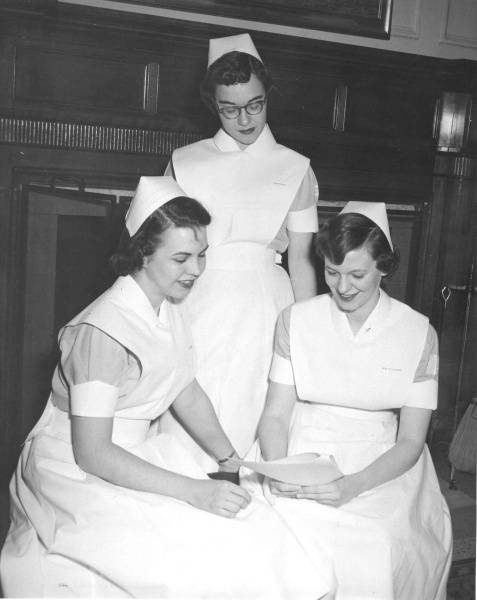Sigma Theta Tau International, one of the world’s largest associations in the world, had its genesis at the Indiana Training School for Nurses ( [IUSON]) in 1922. World War I had recently concluded, and six nursing students and their advisor, Edith Palmer Clarke, founded a society to elevate nursing as a profession, recognize scholarship and leadership, encourage excellence, and supply a social forum for its members. Its name comes from the Greek words storgé, thárros, and timé, meaning love, courage, and honor.

Sigma awarded the first-known nursing research grant in 1936 and provided seed money for scientific investigations on an ongoing basis thereafter. In 1967, Sigma began publishing , one of the most widely read scholarly nursing research journals.
In 1974, Sigma moved to its first permanent residence in the newly constructed IUSON building on the campus and hired its first part-time executive director. In 1975, the organization began publishing a newsletter to improve communications with its membership. Sigma also created national awards—Founders Awards—to recognize leaders in the nursing profession. It deepened its commitment to education and research by adding research sessions to major nursing conferences that included international audiences.
In the 1980s, the international nursing conferences that Sigma established generated interest in other countries. Leaders of the organization developed a 10-year plan to set a vision and perspective for the professional development of nursing not only in the U.S. but also abroad. This strategic plan led to the first national capital fund campaign in nursing history to establish the Center for Nursing Scholarship on the IUPUI campus. Sigma moved from IUSON to its new headquarters in 1989. During this capital campaign, chapters in London, Ontario, Canada (1988); Seoul, Korea (1989); and Taipei, Tawain, R.O.C. (1989) were established.

Sigma experienced continued growth during the 1990s and 2000s. By 2004, it had 431 chapters and 120,000 members in 90 countries. In 2020, the nursing honorary represents more than 135,000 diverse, active members in over 100 countries. It extends membership by invitation only to top nursing students in baccalaureate and graduate nursing programs and to qualified bachelors-, masters-, and doctoral-level nurse leaders who represent exceptional achievement in the nursing profession.
The nursing honorary hosted the first national cable television that profiled nursing. Sigma partnered with CNBC’s American Medical Association Television and Samuel Merritt College’s Studio Three to produce the program, which was entitled . It debuted on CNBC in January 1993.
Sigma also continues to publish the and also . Both are highly rated peer-reviewed journals. The organization publishes approximately 15 nursing-focused books each year and has won many American Journal of Nursing Book of the Year Awards. It also hosts and maintains the Sigma Repository, a free, open-access repository of nursing research.
Each month, more than 1 million people interact with Sigma through social media. In support of its mission, Sigma also offers online continuing education, as well as in-person and virtual mentoring and leadership training. Sigma holds a biennial convention that draws more than 2,500 attendees and conducts virtual and in-person nursing conferences around the globe in locations from Hong Kong and Cape Town to Dublin and Vancouver.

Help improve this entry
Contribute information, offer corrections, suggest images.
You can also recommend new entries related to this topic.